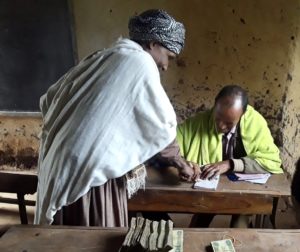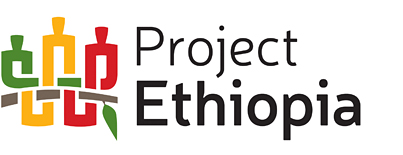Microloans Pave the Way for Economic Resilience
By Len Barson, Board Member
What would a small business or  budding entrepreneur be able to do with a loan of $300 in the U.S.? Likely not very much. However, in rural Ethiopia, a loan this size can make a very significant difference in the life and livelihood of the loan recipient and their family.
budding entrepreneur be able to do with a loan of $300 in the U.S.? Likely not very much. However, in rural Ethiopia, a loan this size can make a very significant difference in the life and livelihood of the loan recipient and their family.
I’ve been interested in microloan funds for some time, so when I learned that Project Ethiopia operates a microloan program, I wanted to learn more. The concept itself is relatively straight forward: microloans are small loans used to help new or existing businesses facing a variety of disadvantages to grow bigger and become more sustainable.
The interest rate in Project Ethiopia’s program is a comparatively low 5% as opposed to 12% to 22% from other lending institutions in the area. Loans are for one year and then must be repaid in full. A local savings and loan association manages the fund, charging 2% for administration. The remaining 3% collected from interest on the loan is returned to Project Ethiopia ’s account to grow the fund for the future.
So far, Project Ethiopia has established three microloan funds supporting residents in three different communities: Bacha Berayta, Dengeshta and Girarghe. The program has made 121 loans to date with an impressive loan repayment rate of 100%. Loans are used to buy lambs and goats to sell at festival feast times, to purchase vegetables and coffee for sale at markets, and to buy supplies to make injera and honey beer, just to name a few.
Project Ethiopia’s program has managed to avoid some of the problems that have beset other microloan funds. This is due in part to the program’s low rate of interest. In addition, local leaders carefully target borrowers who are most likely to benefit from the program and are ready to grow their business or farm production.
In the coming weeks, a fourth microloan fund will be established in a new area so that the program can reach even more deserving recipients! Project Ethiopia also plans to begin collecting additional information from loan recipients to gain greater insight into the program impact and learn if additional training would help their businesses grow even more. Ultimately, if money is available, we hope to establish $5,000 funds in all 34 kebeles (communities) in the Dangla region. Given the successes of the program to date, count me in to help to make this a reality.
